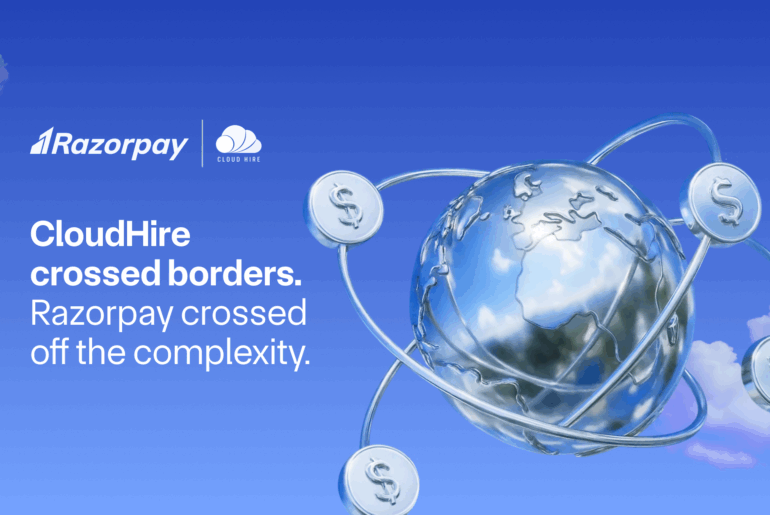Table of Contents
What are Payment Operations?
Payment operations refer to the processes that manage a business’s complete lifecycle of money movement. This includes everything from initiating and processing payments, detecting fraud, ensuring compliance with regulations, and handling disputes, to managing international transactions, reconciliation, and accounting. Payment operations involve integrating these various elements to guarantee that financial transactions are both efficient and secure.
Related Read: What Is Straight Through Processing (STP) in Payments?
Key Components of Payments Operations
1) Payment Processing
Payment processing involves accepting various payment methods like credit cards, debit cards, and bank transfers. It includes verification, authorisation, and fund transfers between parties.
2) Payment Authorisation
Payment authorisation verifies payment information by checking card validity, available funds, and transaction legitimacy. This process involves communication between the merchant, payment processor, and issuing bank.
3) Payment Capture
Payment capture is when the fund is taken from the customer’s account. Settlement is when the funds are transferred to your account, which usually takes 1-3 days.
4) Reconciliation
Reconciliation is matching up payments with bills to make sure everything is correct. This helps find mistakes, stop errors, and keep money matters in order.
5) Chargebacks
Chargebacks are a process where customers dispute a charge and request a refund. This means looking into what happened and gathering proof to solve the problem.
6) Fraud Prevention
Fraud prevention looks at how people usually pay, checks who they are, and watches for strange activity. It uses risk assessment tools to identify risky payments.
7) Compliance
Compliance ensures adherence to regulations like Anti-Money Laundering (AML), Know Your Customer (KYC), and Payment Card Industry Data Security Standard (PCI DSS). They are essential for maintaining legal operations, protecting customer data, and avoiding penalties.
Importance of Payment Operations
As digital payments grow, businesses encounter several challenges with traditional payment systems:
- Managing Multiple PSPs: Coordinating relationships and integrations with various payment service providers (PSPs) can be complex.
- Increased Costs: Transaction fees from multiple providers can accumulate, impacting profitability.
- Higher Risk of Errors and Security Concerns: More systems increase the potential for errors and security vulnerabilities.
- Trouble Providing a Smooth Customer Experience: Fragmented systems can lead to a disjointed checkout process.
To remain competitive, adopting a strategic approach to payment operations is essential. This optimised approach offers several benefits.
Benefits of Optimised Payment Operations
- Cost Reduction: Lower transaction fees through competitive pricing among PSPs and reduced human intervention via automation.
- Faster Processing Time: Transactions can be approved without manual review, speeding up the flow from initiation to settlement.
- Operational Efficiency: Minimises time spent on error correction and reconciliation, enhancing overall efficiency.
- Customer Satisfaction: Quicker refunds, faster issue resolution, and various payment methods improve the customer experience.
- Security Enhancement: Advanced fraud detection measures and adherence to PCI DSS compliance measures reduce risks for both businesses and customers.
- Scalability: Enables handling increased transaction volumes, easy integration of new payment methods, and expansion into new markets.
Best Practices for Payments Operations
1) Automate Payment Processes
Automation reduces manual errors, speeds up transactions, and allows 24/7 processing. Key benefits of automation include:
- Payment orchestration integrates multiple Payment Service Providers through a single platform.
- Straight-Through Processing (STP) enables end-to-end transaction processing without manual intervention. This reduces errors and processing time.
- Real-Time Payments (RTP) facilitate instant money transfers. This results in improving cash flow and customer satisfaction.
- Automated reconciliation saves time and reduces errors in bookkeeping by automatically matching transactions across different systems.
2) Ensure Data Security and Compliance
Prioritising data security is essential for protecting sensitive information and maintaining customer trust. Key security measures include:
- Encryption to protect data during transmission and storage.
- Multi-factor authentication adds an extra layer of security and prevents unauthorised access.
- Preventing fraudulent transactions.
In order to protect sensitive customer information, following industry-wide regulations is important. These regulations include:
- PCI DSS to ensure secure handling of credit card information.
- AML and KYC to prevent money laundering and verify customer identities.
- General Data Protection Regulation (GDPR) to protect personal data.
3) Implement Payments Analytics and Monitoring
Payments analytics tools enable real-time monitoring of payment flows and help identify unusual patterns. By using insights from these tools, you can make data-driven decisions, identify trends in payment data, and spot anomalies that may indicate issues or opportunities.
4) Diversify Payment Options
Different payment methods are key to catering to varied customer preferences and meeting market demands across different regions. Popular payment options include digital wallets (e.g. Google Pay), bank transfers, and emerging methods like Buy Now, Pay Later (BNPL) services. Researching the localised payment method can help you enter and succeed in a new market.
5) Optimise Settlement
Optimising settlement processes is crucial for improving cash flow and reducing risk exposure. You should try to achieve a final settlement as early in the day as possible without creating operational and liquidity risks. Payment method, processing times, and currency conversion for cross-border transactions influencing settlement times. To optimise settlement times, consider:
- Evaluating different payment providers and their settlement speed.
- Using faster payment where available.
- Initiating transactions early in the day and week.
6) Embrace End-to-End Payment Processing
For different payment types, you may struggle with fragmented payment ops. These fragmented operations make the whole processing system complex. An end-to-end payment stack offers several benefits:
- It streamlines management by providing a single platform for all payment operations. It also simplifies reporting and monitoring of insights.
- It eliminates the need to integrate multiple-point solutions by standardising the Application Programming Interface (API) for all payment functions.
- It helps with consistency across the payment process by providing a uniform data format throughout the payment lifecycle.
7) Choose the Right Payment Partner
When your Payment Service Providers (PSPs) share your business vision, they become more than just suppliers. This strategic alignment helps ensure that your payment workflows are fully optimised to meet your business goals. There are several key criteria to consider payment partner:
- Support for multiple payment methods to cater to diverse customer preferences.
- Strong fraud prevention and chargeback management capabilities.
- Scalability to handle increased transaction volumes.
- Enhancement of customer experience through smooth transactions.
Challenges in Payments Operations
1) Fraud
Common types of payment fraud include:
- Friendly fraud (chargeback fraud): Customers dispute legitimate charges with their bank.
- Triangulation fraud: Fraudsters use stolen card details to make purchases from fake online vendors.
- Clean fraud: Criminals use authentic information to make unauthorised purchases.
A few strategies to prevent such fraud include:
- Implementing advanced fraud detection tools using AI/ML for real-time monitoring.
- Using multiple authentication methods, including biometrics and out-of-pattern analysis.
- Conducting regular security audits and updates.
- Raising awareness among customers about fraud risks.
Related Read: What is Friendly Fraud?
2) Chargebacks
Chargebacks pose significant challenges for your businesses as follows:
- High processing costs and fees
- Potential loss of merchant accounts if chargeback ratios exceed acceptable limits
- Time-consuming dispute resolution processes
Strategies to reduce their frequencies include:
- Implement clear return and refund policies.
- Keep online inventory up-to-date to prevent orders for out-of-stock items.
- Manage delivery expectations with clear communication and tracking information.
- Use recognisable billing descriptors on credit card statements.
- For subscription services, avoid automatic billing after free trials.
3) Changing Regulations
The rapid evolution of the payments industry has led to significant regulatory changes worldwide. These evolving regulations impact businesses operating in the payments sector in the following ways:
-
Compliance and Technology Upgrades:
Businesses face increased compliance costs. Investments in advanced systems and dedicated teams are required to meet evolving regulations. Technology infrastructure must be upgraded to accommodate new standards, security protocols, and payment systems.
-
Customer Protection and Security:
Increased regulations around customer protection require you to implement safeguarding mechanisms. You must also invest in educating customers on secure usage of payment methods.
-
Cross-Border Complexities
When you expand into new markets, accepting a multi-currency payment requires following regulatory guidelines as per the target market.
-
Adaptation to Cashless Economies:
Shifting towards a cashless economy demands investments in new payment technologies and changes to business models to remain competitive and compliant.
4) Integration
Integrating payment systems with other business systems presents several challenges. These challenges include:
- Struggle to modify processing platforms to accommodate new payment methods.
- International transactions involve multiple bank accounts, business entities, and regulatory compliance issues.
- Older systems may not easily integrate with modern payment technologies.
Integrating payment systems with other business systems like accounting, customer relationship management (CRM), or inventory management, can be complex due to the following challenges:
-
Data Synchronisation:
Payment systems deal with large volumes of transactions in real-time. This makes it challenging to ensure seamless synchronisation with other systems. Delays or mismatches in data can lead to errors in financial records.
-
Compatibility Issues:
Different systems use various technologies, data formats, or communication protocols. This makes integration challenging.
-
Security Concerns:
Payment systems are responsible for processing sensitive financial data. Integrating them with other business operations requires awareness of potential risks. Strong encryption measures must be implemented throughout the integration process to mitigate such risks.
-
Customisation and Maintenance:
Every business requires customised payment solutions to meet specific needs. Payment gateways and business systems undergo frequent updates. Maintaining these custom integrations in those hours can be challenging.
-
Cost and Resources:
Implementing and maintaining integrated systems can be costly in terms of both time and money. Businesses need skilled IT staff or third-party services to manage the integration.
5) Customer Experience
Providing a seamless payment experience is crucial for customer satisfaction and business success. Below given are the key reasons why a seamless payment experience matters:
-
Reduced Cart Abandonment:
One of the main causes of cart abandonment in e-commerce is a complicated checkout process. A seamless payment system, with features like guest checkout and multiple payment options, can help reduce abandonment rates.
-
Improved Conversion Rates:
Streamlining the payment process can significantly boost conversion rates. This can be achieved through various methods:
- Implementing one-click checkout.
- Securely saving customers’ payment information.
- Offering a variety of local payment options.
-
Mobile Optimisation:
With a growing number of customers shopping via mobile devices, ensuring a seamless payment experience on mobile is critical. An optimised mobile payment process with an intuitive design improves customer satisfaction.
How Technology is Transforming Payments Operations?
1) AI and machine learning
AI and machine learning algorithms analyse user data and purchase behaviour to improve fraud detection in digital payments. These technologies enable faster, more accurate identification of suspicious transactions. AI also optimises payment processes by providing personalised solutions and saving user data.
2) Blockchain
Blockchain technology creates secure, tamper-proof logs of sensitive user data in financial transactions. It enhances transparency by allowing all parties to view the same transaction record. Blockchain reduces processing time for cross-border payments from days to hours while also lowering transaction costs.
3) APIs and open banking
Open banking APIs allow data to be shared securely with third-party apps. This enables the integration of financial services into non-financial platforms. Open banking providers can leverage these integrations to create new revenue streams and gain valuable customer insights.
Future Trends in Payments Operations
1) Real-time payments
India’s real-time payments market is expected to grow at a compound annual growth rate (CAGR) of 14%, with systems like Immediate Payment Service (IMPS) and Unified Payments Interface (UPI) available 24/7 for instant fund transfers. These systems has been providing alternative to cash payments.
2) Cross-border payments
The emergence of FinTech solutions offers faster and cost-effective alternatives to traditional methods like Society for Worldwide Interbank Financial Telecommunication (SWIFT). The Reserve Bank of India (RBI) is focusing on improving cross-border personal remittance flows. This is crucial given India’s position as the largest global market for inward remittance.
3) Digital currencies
The Reserve Bank of India is developing e-Rupee, a Central Bank Digital Currency (CBDC), as a next-generation payment mode. E-Rupee aims to serve as a viable alternative to paper currency. This aims to mitigate risks like counterfeits and theft. The implementation of CBDC could streamline cross-border transactions,
Optimise Your Payment Operations with Razorpay for Seamless Transactions
1) Payment Gateway
Razorpay offers an end-to-end payment gateway solution. It offers seamless processing by supporting a wide range of domestic and international payment methods like credit/debit cards, Equated Monthly Installments (EMIs), UPI, and mobile wallets. With features like global card saving, your customers enjoy an integrated checkout experience across platforms.
Its powerful dashboard provides in-depth insights into payments, settlements, and refunds. It also offers scalable APIs and plugins to integrate with other business tools. Robust PCI DSS Level 1 security ensures data protection.
2) Payment Links
Razorpay payment links enable quick online payments without the need for a website. Enhanced with reminders, they help accelerate payment collection.
3) Payment Button
Razorpay payment button allows you to start accepting one-time and subscription payments on your website. This simple solution enables quick integration without technical expertise.
4) Razorpay POS
Razorpay POS enables you to accept a wide range of payment methods, including credit/debit cards, UPI, wallets, contactless payments, and EMIs. With ultra-fast transactions, it help reduce long queues and enhance customer satisfaction. It also minimises failed transactions and double debit issues
5) Payment Pages
Razorpay Payment Pages offer an easy way to accept both domestic and international payment gateway through a custom online store. You can create payment pages, collect instant payments, and send automated receipts. Whether accepting donations, selling products, or collecting fees, these pages streamline the process.
Frequently asked questions
1) What functions fall under payment operations?
Payment operations include the entire lifecycle of money movement for a company, including initiating payments, setting up approval processes, tracking and attributing sent and received funds, resolving payment failures and returns, reconciling transactions to bank statements, and booking payments to the general ledger.
2) How do payment operations contribute to business efficiency?
Payment operations can improve business efficiency in several ways: automating processes to reduce manual tasks and errors, providing better visibility into cash flow and financial data, enabling faster payments and settlements, and ensuring compliance with regulations.
3) What challenges are common in payment operations?
As companies grow, managing multiple bank accounts, payment methods, and currencies across different regions becomes increasingly complex and error-prone. Manually tracking, reconciling, and moving money through various bank portals and file formats is time-consuming and inefficient.
4) What technologies are used in payment operations?
Payment operations teams rely on a combination of spreadsheets, bank portals, and legacy protocols like Secure File Transfer Protocol (SFTP) to manage transactions. However, as the volume and complexity of payments increase, companies are seeking more automated and integrated solutions, such as payment orchestration platforms, straight-through processing, and real-time payments.



